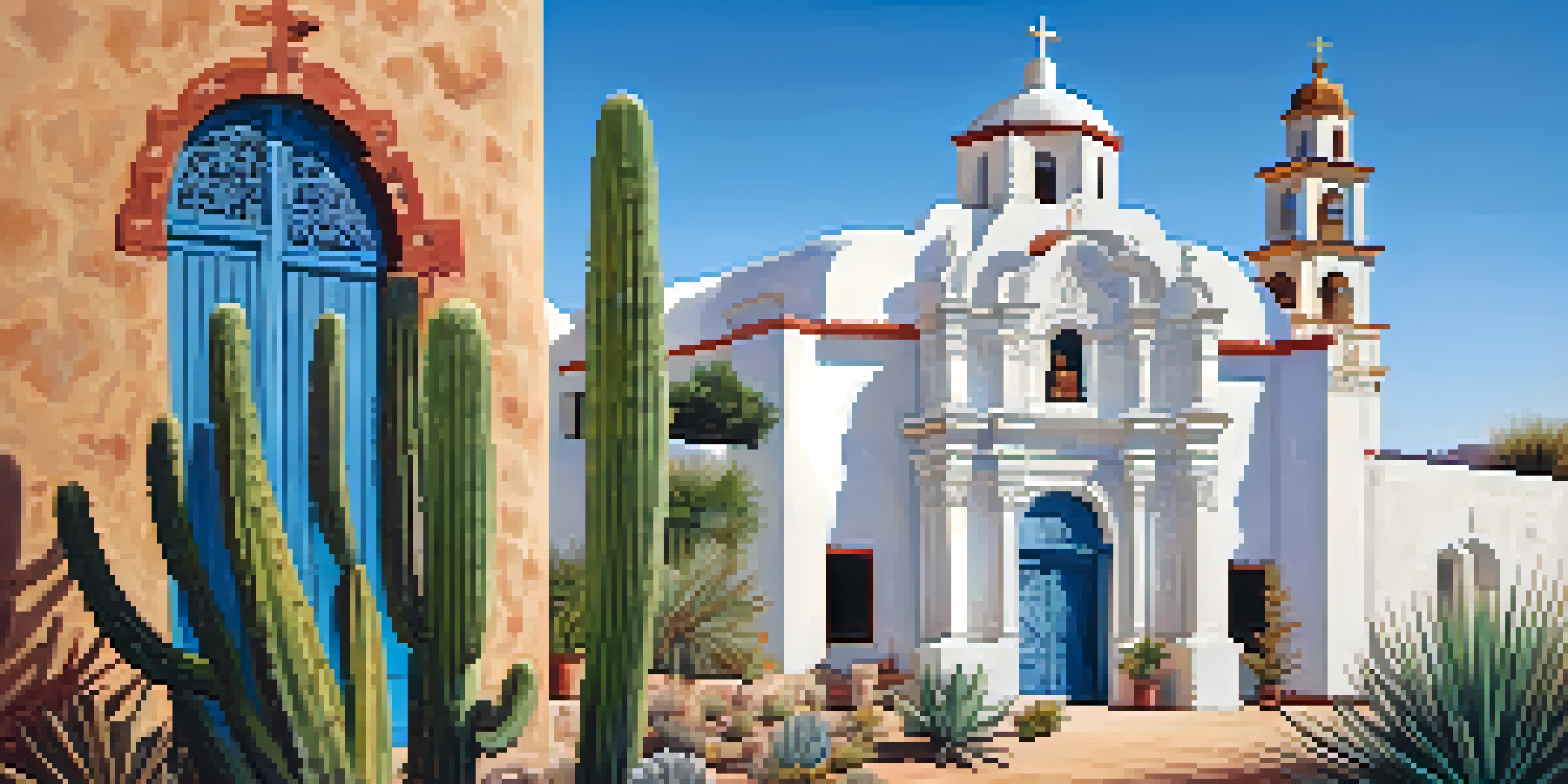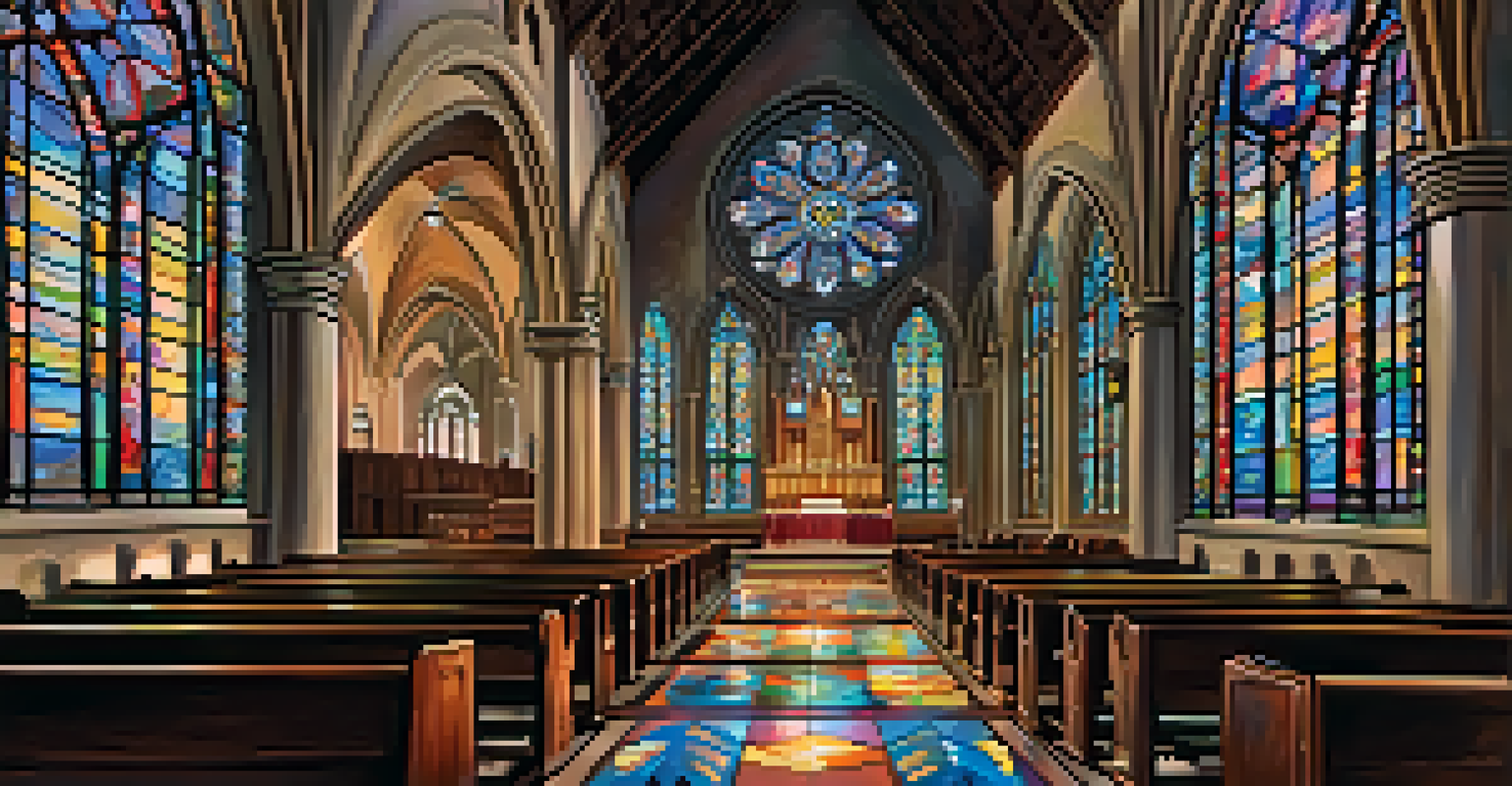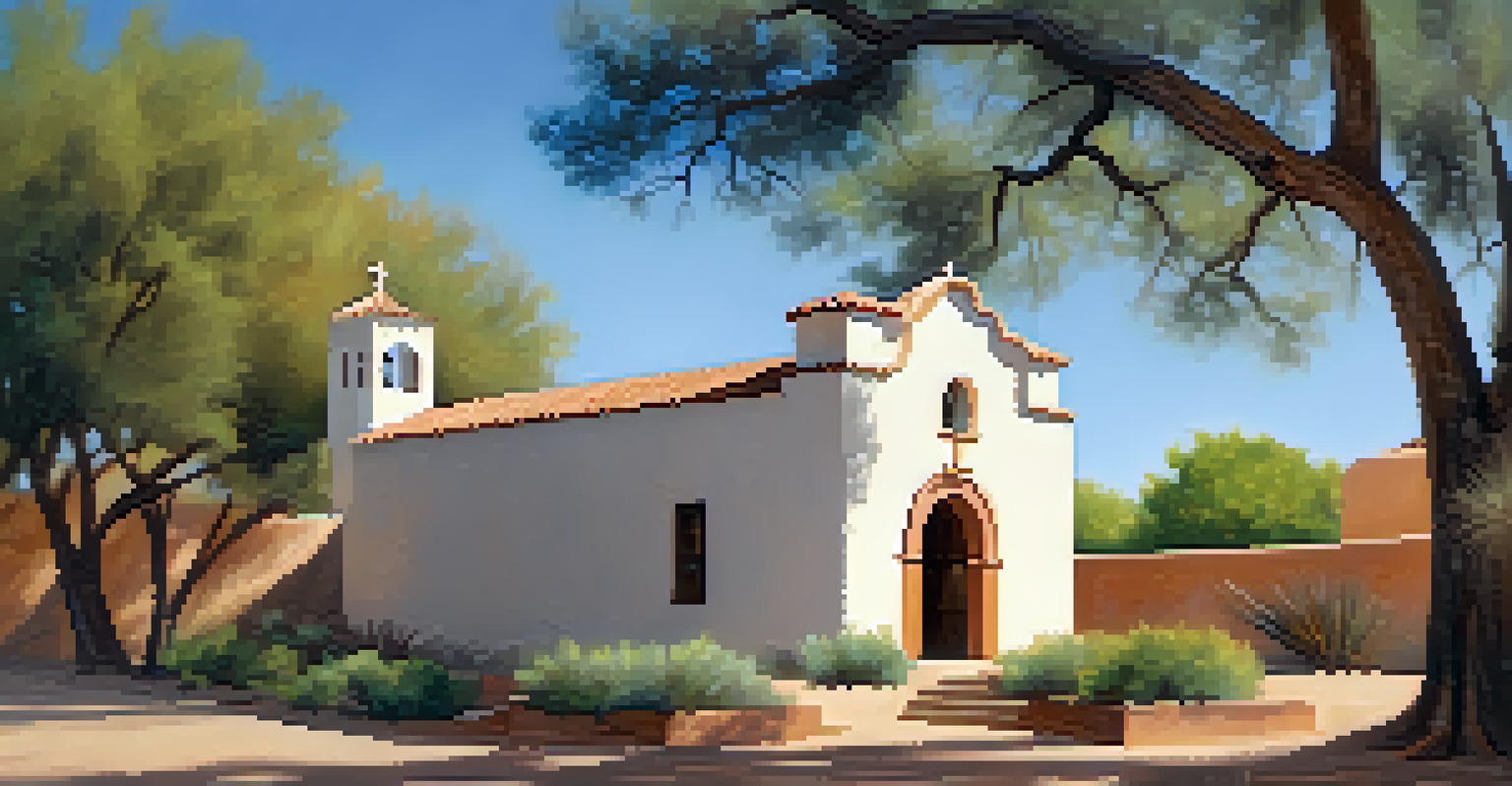Exploring Tucson's Historic Churches: A Cultural Journey

The Significance of Tucson's Historic Churches
Tucson's historic churches are more than just buildings; they are cherished symbols of the city’s cultural and spiritual heritage. Each church tells a story that reflects the diverse communities that have called Tucson home. From Spanish Colonial influences to modern interpretations, these churches serve as a testament to the city's rich history.
Churches are not made of bricks and stones, but of lives that have been touched.
Walking through these sacred spaces, you can feel the echoes of prayers and celebrations that have taken place for centuries. The architecture often features unique designs, incorporating elements that reflect the local environment and the artistic traditions of the time. Whether you’re a history buff or simply curious, these churches offer a glimpse into Tucson’s past.
Moreover, these churches are active centers of community life today, hosting events, festivals, and services that draw people in from all walks of life. This blend of history and contemporary relevance makes exploring Tucson’s historic churches a rewarding experience.
Mission San Xavier del Bac: The Jewel of the Desert
No exploration of Tucson's historic churches is complete without a visit to Mission San Xavier del Bac, often referred to as the 'White Dove of the Desert.' Founded in 1692, this stunning mission is a masterpiece of Spanish Colonial architecture, featuring intricate details that captivate visitors. The vibrant murals and ornate altars inside tell stories of faith and community that have persisted through centuries.

As you step inside, the serene atmosphere instantly transports you to a different era. The mission's location along the banks of the Santa Cruz River adds to its charm, making it a peaceful retreat from the bustling city. It's not just a visual feast; the mission is also a place of worship, continuing to serve the local Catholic community.
Tucson's Churches Reflect Heritage
Tucson's historic churches symbolize the city's rich cultural and spiritual legacy, showcasing diverse architectural styles and community stories.
Visitors often leave with a deeper appreciation for the cultural significance of this historic site. Whether you're there for spiritual reflection or simply to admire the artistry, Mission San Xavier del Bac remains a must-see landmark in Tucson.
St. Augustine Cathedral: A Blend of History and Modernity
St. Augustine Cathedral stands as a prominent feature of Tucson's skyline, blending history with modern elements. Built in the late 19th century, this cathedral showcases a stunning mix of Romanesque Revival and Gothic styles. The interior is just as impressive, adorned with beautiful stained-glass windows that filter sunlight into vibrant colors.
The church is not a museum for saints, but a hospital for sinners.
The cathedral not only serves as a place of worship but also as a venue for community events and concerts. Its welcoming environment makes it a popular spot for both locals and tourists, creating a sense of unity among visitors. Stories of its architectural journey and restoration efforts resonate with anyone who appreciates historical preservation.
Attending a mass or simply exploring the cathedral can be a profound experience, offering a chance to connect with the spiritual fabric of Tucson. The harmonious blend of history and community engagement makes St. Augustine Cathedral a vital part of Tucson’s cultural landscape.
The Historic El Presidio Chapel: A Hidden Gem
Nestled within the El Presidio Historic District, the El Presidio Chapel is a charming yet lesser-known treasure. Originally built as part of the Spanish military fort in the 18th century, the chapel reflects the early colonial life in Tucson. Its simplicity and rustic charm offer a stark contrast to the more ornate churches in the area.
Visiting this chapel feels like stepping back in time, allowing you to imagine the lives of the soldiers and settlers who once gathered there. The chapel's intimate size creates a cozy atmosphere, making it an ideal spot for quiet reflection. Even if you’re not religious, the historical context is fascinating and worth exploring.
Mission San Xavier: A Must-See
Mission San Xavier del Bac, known as the 'White Dove of the Desert,' is a stunning example of Spanish Colonial architecture and an active place of worship.
As you wander through the surrounding historic district, the chapel serves as a reminder of Tucson’s foundational years. This hidden gem is perfect for those looking to escape the more crowded tourist spots and discover something truly special.
St. Demetrios Greek Orthodox Church: A Cultural Mosaic
St. Demetrios Greek Orthodox Church showcases the rich tapestry of cultures that contribute to Tucson’s diversity. Founded by Greek immigrants, this church stands out with its striking Byzantine architecture, which may remind you of a small piece of Greece nestled in the desert. The vibrant blue domes and intricate iconography are not only beautiful but also hold deep spiritual significance.
Inside, the church is adorned with stunning frescoes and mosaics that tell the story of the Orthodox faith. Attending a service or cultural event here provides insight into the traditions and customs of the Greek community in Tucson. The warm welcome from the congregation reflects the spirit of hospitality that is characteristic of Greek culture.
Visiting St. Demetrios is not just about admiring the architecture; it’s about experiencing a living culture. The church hosts various events throughout the year, allowing visitors to engage with the community and celebrate its heritage.
The Role of Churches in Tucson's Community Life
Tucson's historic churches are integral to the community, serving as gathering places for worship, celebration, and support. Beyond their architectural beauty, these churches often provide social services, outreach programs, and a sense of belonging for many residents. This role enhances their importance in the cultural fabric of the city.
Many churches host events that celebrate local traditions, holidays, and cultural heritage, inviting people from all backgrounds to participate. For example, church festivals often feature food, music, and activities that highlight the diverse influences that shape Tucson. These events foster connections and create a sense of community among attendees.
Churches Foster Community Engagement
Historic churches in Tucson serve as vibrant community centers, hosting events that celebrate local traditions and bring together residents from all backgrounds.
In essence, Tucson’s historic churches are not just relics of the past; they are vibrant centers of modern life. Engaging with these places can deepen your understanding of the community’s values and the shared history that binds together its residents.
Planning Your Visit: Tips for Exploring Tucson's Churches
When exploring Tucson’s historic churches, planning ahead can enhance your experience. Start by researching which churches align with your interests, whether it's architecture, history, or cultural events. Many churches have specific visiting hours, so checking their schedules can help you avoid any surprises.
Consider taking guided tours, which can provide deeper insights into the history and significance of each church. Local guides often share stories and anecdotes that enrich the experience, making it more than just a visual journey. Additionally, participating in services or community events can offer a unique perspective and foster meaningful connections.

Lastly, take your time to appreciate the beauty and tranquility of each site. Whether you’re capturing photos or simply soaking in the atmosphere, these historic churches promise to leave a lasting impression on your heart and mind.